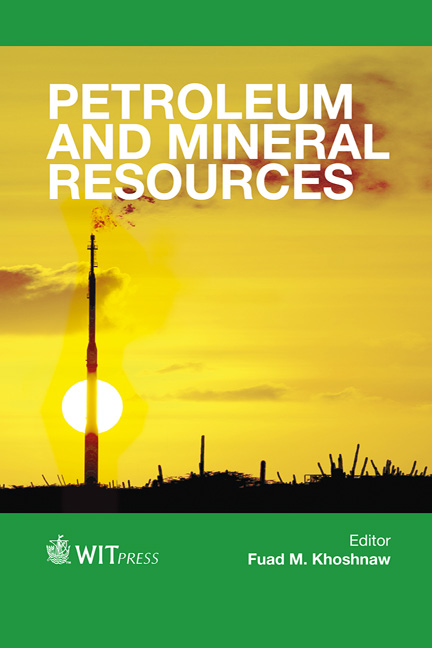A Log Based Analysis To Estimate Mechanical Properties And In-situ Stresses In A Shale Gas Well In North Perth Basin
Price
Free (open access)
Transaction
Volume
81
Pages
12
Page Range
163 - 174
Published
2012
Size
670 kb
Paper DOI
10.2495/PMR120151
Copyright
WIT Press
Author(s)
S. Archer & V. Rasouli
Abstract
In drilling operation the design of a proper mud weight to avoid any instability’s is important. A low mud weight may cause breakouts around the borehole whereas a high mud weight can fracture the formation. Mud weight design is based on two main factors: the mechanical properties of formations being drilled and the state of in-situ stresses in the field. While drilling in soft formations are thought to be more prone to drilling related issues than hard formations, there are several cases where opposite observations have been reported. This is indeed due to a high stress anisotropy which can apply a large shear stress to the rock to fail it. As it is seen, in order to define the stable mud weight windows for drilling it is important to not only have a good understanding about the mechanical properties of formations but also a good estimation of the state of stresses in the field. In this study we used a log based methodology to extract rock elastic and strength properties as well as the magnitude of stresses including vertical and maximum and minimum horizontal stresses. This is based on the fundamental relationship between physical properties of rocks as captured in petrophysical logs (such as sound velocity or density) and mechanical properties, such as uniaxial compressive strength. Due to rapid increase in developing unconventional reservoirs, in particular in Australia, in this study we applied the log based analysis as a case study to a shale gas well drilled in the North Perth Basin. Continuous logs of elastic and strength properties were extracted using available correlations and were calibrated at some depths where the triaxial lab tests results were reported on some core samples. The pore pressure and stress profiles were estimated using poro-elastic relationships. Pore pressure profile was calibrated using MDT data, the minimum stress profile was calibrated against the leak-off test data and maximum stress curve was fixed in a way to
Keywords
mechanical earth model, in situ stresses, mud weight window





